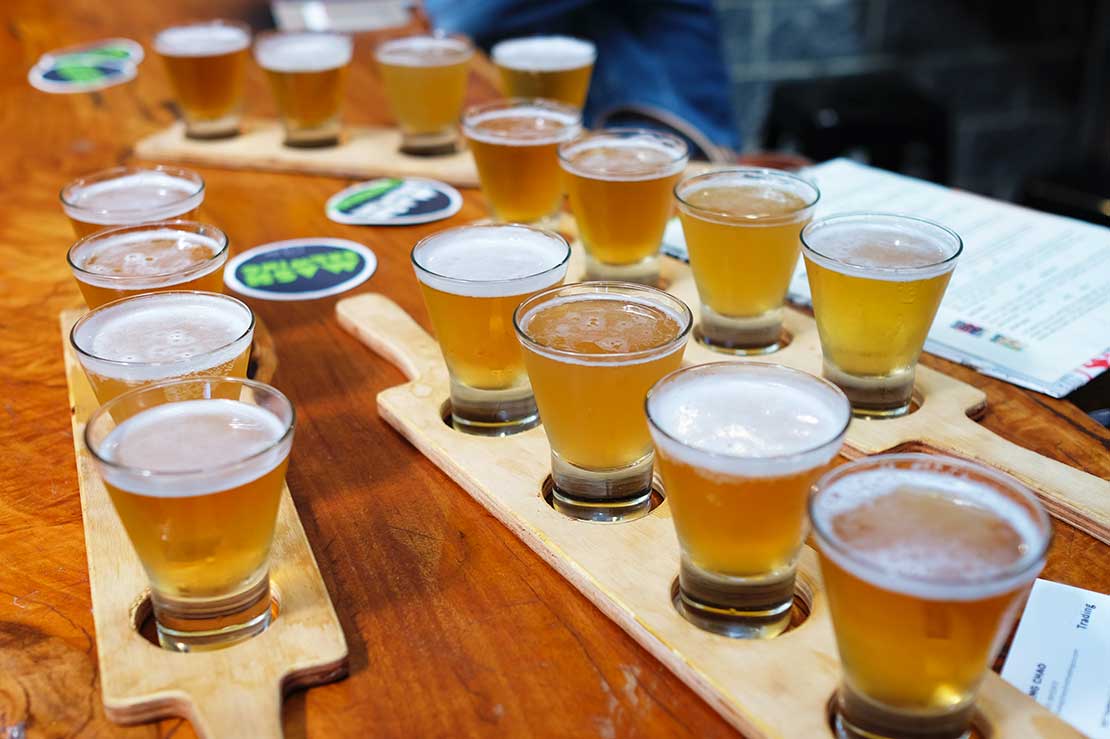Brewing is the production of an alcoholic beverage from a starch based source through fermentation. It is a process not limited to beer; other products such as sake, cider, and soy sauce are also brewed. As explored in Beer: The oldest social lubricant, this simple science has remained the same since the beginning of time.
Beer primarily made of four ingredients: water, malted barley, hopes and their propriertary yeast. Most beer production follows these steps:
Malting
Malting prepares and unlocks the starches in barley. First, barley is soaked in water for an amount of time. The mix of grain and water will then be spread out further to allow germination to take place. This process releases enzymes for the conversion of complex carbohydrates into fermentable sugars. The next step, called kilning, is the drying of the grain by roasting to stop germination. The longer the grains are roasted, the more caramel-like and darker the beer would be.
Mashing
After milling, which is a process that cracks the grain to allow water to extract sugars, the resulting malted barley is then mashed by adding water at a set temperature. The mix is crushed, passed through a roller to break up the malted barley, and then lautered and sparged, where the liquid is drained and returned to the top to be filtered through the grains’ residues. The resulting fermentable liquid containing sugars are called worts.
Boiling
The worts are then mixed with hops (which is responsible to the bitter taste in beer) and then the mash is boiled. Boiling eliminates bacteria and breaks down complex carbohydrates into simple sugars to ease the fermentation process. Boiled worts are then cooled, a step called pitching, to a temperature that is ideal for yeast to reproduce.
Fermentation
After the liquid and the solids of the worts are separated, yeast is added to the liquid for this last step. The yeast will feed on sugars and produce carbon dioxide and ethyl alcohol. After fermentation, the yeast will settle down at the bottom of the tanks. The result is beer, which will be cooled off, extracted and filtered, ready to be bottled or kegged.
There you have it. We strongly advise against brewing beer at home. Not only would it be illegal to do so in Malaysia, there is also the issue of achieving consistency in terms of alcoholic content and flavour in different batches of homebrewed beer. Leave it to the experts.
As a side note, craft beers, produced using more or less the same steps as above by microbreweries, belong in its own distinct category as production is small, independent, and traditional. Small – has an annual production of 6 million barrels or less; independent – less than 25% of the brewery is owned or controlled by an alcoholic beverage industry member who is not a craft brewer themselves; and traditional – retains an all malt flagship (or at least half of its volume) in either all malt beers or in beers which use additives to enhance flavour.
- T -
